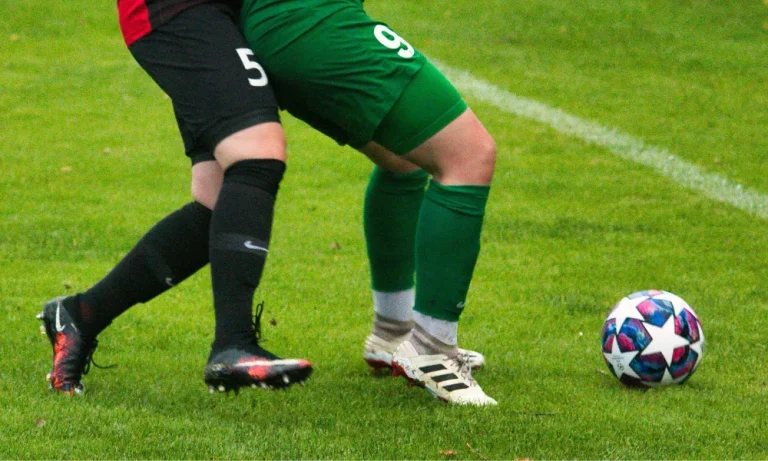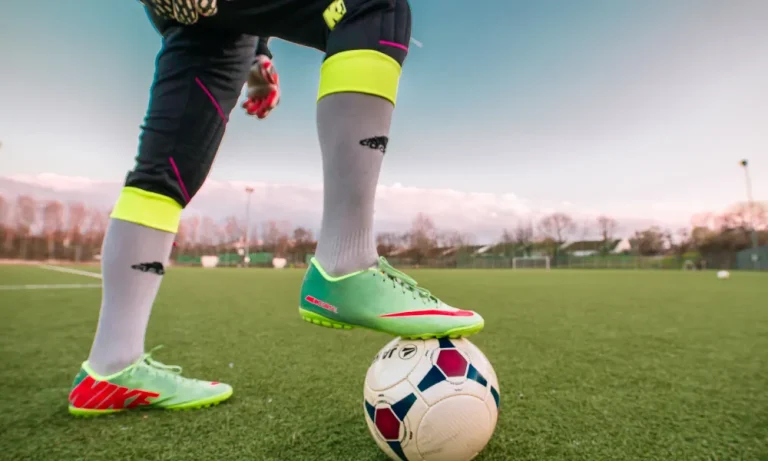Knee Protection in Basketball: How to Guard Your Knees
Do you love playing basketball? It’s an exhilarating sport that requires agility, speed, and quick movements. But have you ever thought about the impact it can have on your knees? Basketball players are prone to knee injuries, which can be both painful and frustrating. In this article, we’ll discuss the importance of knee protection in basketball and share practical tips to safeguard your knees and enhance your performance. Let’s dive in!
Why are the knees vulnerable in basketball?
Basketball is an exhilarating sport that puts tremendous stress on the knees. As a basketball player, it’s crucial to understand why our knees are vulnerable and how certain movements can impact them.
The biomechanics of basketball involve a combination of running, jumping, cutting, and pivoting. These movements can put immense strain on our knees. Repetitive movements like running up and down the court, jumping for rebounds, and making quick lateral cuts can gradually wear down the knee joints over time.
Sudden changes in direction are particularly challenging for the knees. When we abruptly change our course or pivot, the forces exerted on our knees increase significantly. This can lead to ligament sprains, meniscus tears, or even more severe injuries like ACL tears.
Moreover, the hard indoor court surfaces commonly found in basketball courts do not provide much shock absorption. This means that when we land from a jump or make aggressive moves, the impact is directly transferred to our knees, increasing the risk of injury.
To protect our knees in basketball, it’s essential to be aware of these vulnerabilities. By understanding the biomechanics and movements that put stress on our knees, we can take proactive measures to prevent injuries and ensure long-term knee health.
What are the essential knee protection gear and equipment?
When it comes to safeguarding our knees while playing basketball, using the right gear and equipment can make a significant difference. Let’s explore the essential knee protection options and understand their benefits.
One of the most common knee protection gear options is knee braces. These are specially designed to provide stability and support to the knee joint. Knee braces come in various types, such as sleeves, straps, and hinged braces. Sleeves are lightweight and offer compression to improve blood flow and reduce swelling. Straps provide additional support to specific areas of the knee, while hinged braces offer enhanced stability by restricting excessive movements.
Another popular knee protection option is knee sleeves. These are flexible, elastic sleeves that provide compression and warmth to the knee area. Knee sleeves can help reduce pain, improve proprioception, and provide mild support during physical activities.
Additionally, knee pads are commonly used for knee protection in basketball. These pads provide cushioning and absorb the impact when we land or slide on the court. Knee pads are available in different thicknesses and materials, allowing players to choose the level of protection they need.
When selecting knee protection gear, it’s essential to consider factors such as comfort, fit, and the specific requirements of your knees. It’s advisable to consult with a healthcare professional or a sports specialist to determine the most suitable gear for your needs.
How can proper warm-up and stretching routines help protect the knees?
Proper warm-up and stretching routines are essential for protecting our knees while playing basketball. Let’s explore why warming up and specific stretches targeting the knee area are crucial for enhancing flexibility and reducing the risk of injury.
Warming up before engaging in any physical activity is crucial as it prepares our muscles, joints, and cardiovascular system for the upcoming exertion. A warm-up routine typically includes light aerobic exercises like jogging or jumping jacks, which increase blood flow and raise our body temperature. This helps loosen up the muscles around our knees, making them more flexible and less prone to strain or injury.
In addition to a general warm-up, incorporating specific stretches targeting the knee area is highly beneficial. Stretches like quad stretches, hamstring stretches, and calf stretches help improve the flexibility of the muscles surrounding the knees. By increasing flexibility, we reduce the strain on the knee joints and enhance their range of motion. This allows us to move more freely on the basketball court, decreasing the risk of sudden jerky movements that can lead to knee injuries.
It’s important to note that stretching should be done gently and gradually, without bouncing or forcing the body into uncomfortable positions. Holding each stretch for around 15-30 seconds and repeating them a few times can effectively improve flexibility and reduce the risk of knee injuries.
What are the best techniques for landing and jumping to minimize knee strain?
Mastering proper techniques for landing and jumping is crucial in minimizing knee strain and preventing injuries while playing basketball. Let’s explore the correct landing techniques and tips for improving jumping mechanics to reduce the impact on our knees.
When it comes to landing, it’s important to focus on absorbing the impact and distributing the force evenly. To achieve this, it’s advisable to land with slightly bent knees and a soft, controlled descent. This helps to dissipate the force throughout the lower body, reducing the strain on the knees. Additionally, ensuring that the knees are aligned with the toes during landing helps maintain proper alignment and minimizes the risk of twisting or hyperextension.
Improving jumping mechanics can also significantly reduce the impact on our knees. One key tip is to engage the muscles in the legs and core before jumping. This provides stability and control during takeoff and landing. Additionally, focusing on a smooth and explosive upward motion, using the power generated from the legs, can help minimize the strain on the knees during the jump.
It’s important to note that practicing proper landing and jumping techniques is a gradual process. Start with low-intensity jumps and gradually increase the intensity as your technique improves. Consistency and patience are key to developing good habits and reducing the risk of knee strain.
How can strength and conditioning exercises prevent knee injuries?
Incorporating strength and conditioning exercises into our basketball routine is crucial for preventing knee injuries. Let’s explore the importance of strengthening the muscles around the knees and recommended exercises to improve stability and protect the knee joints.
Strengthening the muscles around the knees plays a vital role in providing support and stability to the joint. When these muscles are strong, they help absorb the impact and reduce stress on the knees during movements like jumping, cutting, and landing. By strengthening the quadriceps, hamstrings, calves, and glutes, we can enhance knee stability and minimize the risk of injuries such as strains, sprains, or tears.
There are several effective exercises that can help improve knee stability and protect the knee joints. Squats, for example, are a great compound exercise that targets multiple leg muscles, including the quadriceps and glutes. Lunges and step-ups are also excellent exercises that engage the muscles around the knees and promote stability. Additionally, exercises like leg presses, calf raises, and hamstring curls can further strengthen the lower body and support the knee joints.
It’s important to start with light weights or bodyweight exercises and gradually increase the intensity as strength improves. Performing these exercises with proper form and technique is crucial to avoid unnecessary strain on the knees. Consistency and gradual progression are key to reaping the benefits of strength and conditioning exercises for knee injury prevention.
What are the long-term strategies for knee health in basketball?
Maintaining knee health is essential for a long and successful basketball career. Let’s explore some tips for preserving knee health throughout our basketball journey and discuss the importance of proper rest, recovery, and injury prevention strategies.
One of the most crucial long-term strategies for knee health is ensuring an adequate amount of rest and recovery. Basketball is a physically demanding sport, and overexertion can put excessive stress on our knees. It’s important to listen to our bodies and give ourselves enough time to rest and recover between training sessions and games. This allows our knees and the entire body to repair and regenerate, reducing the risk of overuse injuries and promoting overall well-being.
Injury prevention strategies are also vital for maintaining knee health in basketball. This includes proper warm-up and cool-down routines before and after every practice or game. Dynamic stretching and mobility exercises can help prepare the muscles and joints, reducing the risk of strains or sprains. Additionally, wearing appropriate protective gear, such as knee pads, can provide an extra layer of cushioning and support to the knees.
Regular strength and conditioning exercises, as discussed earlier, are crucial for long-term knee health. By consistently engaging in exercises that strengthen the muscles around the knees, we can improve stability and reduce the likelihood of injuries. It’s also important to maintain a balanced and nutritious diet to support overall joint health and reduce inflammation.
Conclusion
As basketball players, we must prioritize the protection and health of our knees to ensure a long and successful career on the court. By understanding the importance of strength and conditioning exercises, we can prevent knee injuries and improve stability. Incorporating long-term strategies like rest, recovery, and injury prevention techniques further safeguard our knees. Remember, seeking professional guidance and medical advice is crucial for addressing any concerns.
FAQs – Knee Protection in Basketball: How to Guard Your Knees
What are some recommended exercises to improve knee stability in basketball?
Squats, lunges, step-ups, leg presses, calf raises, and hamstring curls are effective exercises for improving knee stability.
How often should I perform strength and conditioning exercises for my knees?
Aim for 2-3 sessions per week, gradually increasing intensity as your strength improves.
Is it necessary to wear knee pads while playing basketball?
Wearing knee pads is not mandatory, but they provide an extra layer of cushioning and support to protect your knees.
Can I prevent knee injuries solely by doing exercises?
While exercises help strengthen the muscles around the knees, it’s important to also prioritize rest, recovery, and injury prevention techniques for overall knee health.
Should I consult a professional if I experience knee pain or discomfort while playing basketball?
Yes, it’s recommended to seek professional guidance and medical advice for any knee-related concerns to ensure proper diagnosis and treatment.
Can basketball shoes affect knee health?
Yes, wearing proper basketball shoes with good cushioning and ankle support can help reduce the impact on your knees and prevent injuries.
By following this content outline, you can create a comprehensive and SEO-optimized blog post on knee protection in basketball.





